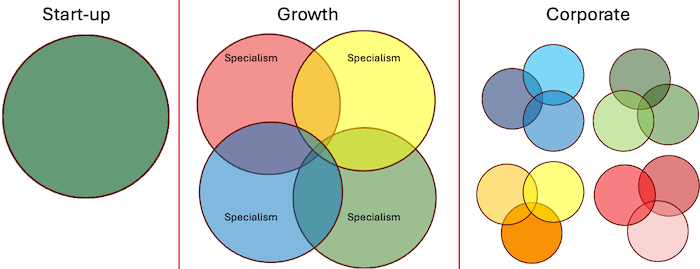Early in my career, I discovered that the technical skills I gained outside the DBA discipline made me a better DBA. Some skills applied directly; others helped me follow complex conversations with non-DBA colleagues. I learned that when colleagues seek you out first—not last—you’ve earned their trust. They value your opinion and rely on your insight.
Now, nearing the end of my career, I realise my focus was right but too narrow. Technical depth alone isn’t enough. When you learn how other parts of your organisation work, you spot more opportunities and understand how to make the most of them.
In my experience, companies put sparse effort into maintaining business awareness in technical teams. This shows itself in out-of-control cloud costs, gold-plated features and prioritising the wrong thing.
Why Business Awareness Matters
In my experience, many companies invest little in helping technical teams understand the business. The result is familiar: spiralling cloud costs, gold-plated features, and misplaced priorities.
Most of us receive formal training only for security awareness. Because I work in an ISO27001-compliant environment, I must confirm that I know where to find—and have read—company policies on:
- Acceptable use
- Anti-bribery and corruption
- Business continuity
- Remote working
- Physical and electronic security
That’s around twenty documents, each followed by a quiz to prove I didn’t just click Next, Next, Accept.
We should also test our knowledge of our own organisation. Companies evolve. Strategies shift. Priorities change. What you knew when you joined might no longer be true today.
How Organisational Knowledge Fades Over Time
The diagram below is simple, but it highlights a real problem: how awareness of the broader organisation fades as a company grows.

In a start-up, two or three people sit around one desk. Everyone knows everything. As the company expands, people specialise. You might still share a floor or Slack channel, but no one can know everything in detail.
Then comes success — and separation. Departments grow into sub-departments, and communication between them starts to thin. Teams use the same words to mean different things — “customer,” “sale,” “priority.” Without effort, the natural result is a slow drift toward “us and them” between departments.
What would "Understanding Our Business" training look like?
If we introduced an annual “Understanding Our Business” review, I would expect it to focus on a few simple but revealing questions:
What matters most right now and why?
Is our top priority revenue growth, risk management, cost control, market awareness or something else?
- Start-ups usually focus on revenue and market awareness
- Mature organisations shift toward efficiency and long-term stability.
Knowing where we are in that journey helps us direct effort to the right activities.
Who are our most valuable customers, and why?
Value isn't just about revenue. When I worked in advertising, we viewed our customers in 3 ways
- Large, high revenue and profit. High financial impact, but fickle. Large customers are more mercenary and can drop you at short notice.
- Medium revenue with longevity. These customers keep your lights on and your bills paid
- Low revenue but different. Their needs spurred innovation and experimentation. This gave us an edge that helped recruit the medium and large clients.
Understanding who the customer truly is matters. At one company, we served as an intermediary. Website users weren’t our customers—the paying clients were the businesses behind those services. During one product change, a team outsourced part of the website without consulting IT. When month-end came, finance couldn’t invoice anyone because no transactions had been captured. The oversight also broke our marketing data flow. Two months later, another team repeated the same mistake.
These issues weren’t technical—they were organisational blind spots.
What are the information flows?
As DBAs, we are often privileged to know where the hidden rivers of data are buried. We know how fast they are flowing, from where and to what. By sharing that knowledge, we help others understand dependencies, identify waste, and spot risks.
Even if we don’t know whether every data source is still in use, making flows visible allows the right people to decide.
What does an effective business case look like?
A strong case:
- Defines the problem.
- Describes what happens if we ignore it.
- Highlights the benefits of taking action.
- Lists the resources required.
- Identifies the people needed upstream, downstream, and at the centre of the change.
Good business cases clarify thinking and simplify decisions. Even if the outcome is no change, the process still adds value.
Where do I go to find out more?
If “Understanding Our Business” becomes formal training, it needs an accessible FAQ or knowledge hub.
Each topic should list subject-matter experts and stewards so employees can ask questions and share insights.
Closing thoughts
Formal “Understanding Our Business” training would give new employees a strong start and refresh knowledge for existing staff. It would help everyone share a common, current view of how the organisation works—today, not yesterday.
As the business evolves, so must the training. Only then will it strengthen awareness instead of paying lip service to it.


